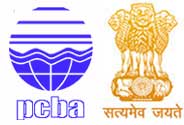About NAMP
The main functions of the State Pollution Control Boards are as follows:
- To plan a comprehensive programme for prevention, control and abatement of air pollution and to secure the execution thereof.
- To advise the State Government on any matter concerning prevention, control and abatement of air pollution.
- To collect and disseminate information related to air pollution.
- To collaborate with Central Pollution Control Board in programme related to prevention, control and abatement of air pollution; and
- To inspect air pollution control areas, assess quality of air and to take steps for prevention, control and abatement of air pollution in such areas.
The objectives of the N.A.M.P. are
The main functions of the State Pollution Control Boards are as follows:
- To determine status and trends of ambient air quality;
- To ascertain whether the prescribed ambient air quality standards are violated;
- To Identify Non-attainment Cities;
- To obtain the knowledge and understanding necessary for developing preventive and corrective measures and
- To understand the natural cleansing process undergoing in the environment through pollution dilution, dispersion, wind based movement, dry deposition, precipitation and chemical transformation of pollutants generated.
Under N.A.M.P., four(4) air pollutants have been identified for regular monitoring at all the locations :
- Sulphur Dioxide (SO2),
- Oxides of Nitrogen as NO2,
- Respirable Suspended Particulate Matter (RSPM / PM10) and
- Fine Particulate Matter (PM2.5).
The monitoring of meteorological parameters were also integrated with the monitoring of air quality such as –
- Wind speed and wind direction,
- Relative Humidity (RH) and
- Temperature.
